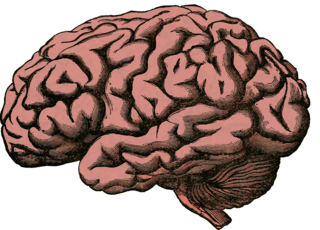Anxiety
Why You Can Relieve Your Anxiety Now or Later, but Not Both
Learn why resisting your anxiety makes it worse, and what you can do about it.
Posted August 16, 2019 Reviewed by Devon Frye
One of the first things I tell my clients about anxiety is the single most important thing to know about it: Short-term avoidance of anxiety leads to long-term maintenance of anxiety.
In other words, anything you do when you feel anxious to try and make yourself feel better at that moment might work at that moment, but actually guarantees more anxiety the next time you are in a similar situation.
The More You Fight Anxiety, the Worse It Gets
This is a very frustrating paradox for people with anxiety. So let's take a look at why this is the case.

Your brain is constantly looking around at stimuli in your environment and saying, "Yes, that's dangerous," or "No, that's not dangerous."
When it decides nothing in your environment is dangerous, you feel calm. When it decides something in your environment is dangerous, it gives you a warning signal to alert you to the danger and motivate you to do something about the danger.
That's what anxiety is: an alarm from your brain to tell you that you're in danger, and you need to do something to make yourself safe.
Dog Phobia Example: Avoidance of Dogs (Short-Term Relief)
Let's take a super simple example of anxiety, like a dog phobia (most clients come in with more complex anxiety concerns than this, but it's a good example to demonstrate these ideas). If you have a dog phobia, and you see a dog sitting in my office, your brain will look at the dog and decide, "Yes, that's dangerous."
It will, therefore, ring the alarm of anxiety. Because anxiety is uncomfortable, that motivates you to run out of the room away from the dog. That's the short-term avoidance behavior.
Once you get away from the dog, your brain will again look around your environment and say, "Okay, no more dog. This is no longer dangerous; we can shut the alarm off." The anxiety then goes down, and you feel better at that moment (short-term relief).
Unfortunately, because you ran away and got relief, your brain learns a lesson you don't really want it to learn. It learns, "Okay, we were in this dangerous situation with that dog. I warned you about it, like I usually do, with the anxiety. You did what I wanted you to do and got away from the dog. Now, let's check and see how we are doing..."
Now, your brain basically does a quick check of your body and sees that you are physically unharmed and safe. "Okay, we're safe, nothing happened. Phew. I guess that means the anxiety I gave you worked. So next time you see a dog, I'll make you anxious again, so you stay safe again. In fact, I'm so happy you are safe, and I want so badly to make sure you are safe in the future, that I'm going to give you even more anxiety next time to make absolutely sure you stay safe."
Then the next time you see a dog, you have the same or possibly even more anxiety, because your brain thinks you need it to stay safe. Your brain doesn't realize that you didn't actually need the anxiety to stay safe, because the dog probably just wasn't dangerous.
By avoiding the dog and getting short-term relief of anxiety, you unintentionally taught your brain to give you more anxiety next time. That's a pretty frustrating process because it's understandable to want short-term relief of your anxiety. Unfortunately, this short-term relief makes long-term relief impossible.
So what can be done about it?
The Answer Is Simple: Face Your Fears
Forego short-term relief in favor of long-term relief. This is the basis of Exposure Therapy, a type of Cognitive-Behavioral Therapy that has been shown to be the most effective treatment for all types of anxiety disorders. Here is how that would work:
Dog Phobia Example: Exposure to Dogs (Long-Term Relief)
You see the dog. Your brain looks at the dog and says, "This is dangerous," and rings the alarm of anxiety to tell you to get away from the dog. However, you disobey your brain and do the complete opposite of what it is telling you to do: You walk right up to the dog and start petting it.

Now your brain panics and rings the anxiety alarm even louder, meaning you feel even more anxious. But even though this is uncomfortable, you continue to disobey your brain and stay with the dog.
If you do this for a long enough period of time, it forces your brain to learn something new. It forces your brain to now look at the situation and say, "Huh... This is odd. You were in this dangerous situation with the dog. I warned you about it, like I usually do, by giving you anxiety, but this time you didn't listen to me. In fact, you did the complete opposite of what I was telling you to do. And yet…"
It again does the physical check of your body and sees that nothing is wrong; you are physically unharmed: "You are safe. That's weird… I guess maybe that dog is not actually dangerous." Because your brain has now learned this, you will have less anxiety the next time you see that particular dog.
If you then repeat that process enough different times with enough different dogs, eventually, that learning in your brain generalizes, and your brain just learns, "Ohhh... Dogs, in general, are not dangerous, and I don't need to warn you about them." Then the next time you see a dog, your brain will say, "Nope, that's not dangerous," and you will not have the anxiety.
Facing your fears teaches your brain that the things it thinks are dangerous are not actually dangerous. This very basic idea applies to all forms of anxiety. In future blog posts, I will talk more about the specifics of how this works for different kinds of anxiety.
So if you suffer from anxiety, you have a choice: You can feel better now, or you can feel better later, but not both. See what happens when you start choosing long-term relief over short-term relief by facing your fears?




